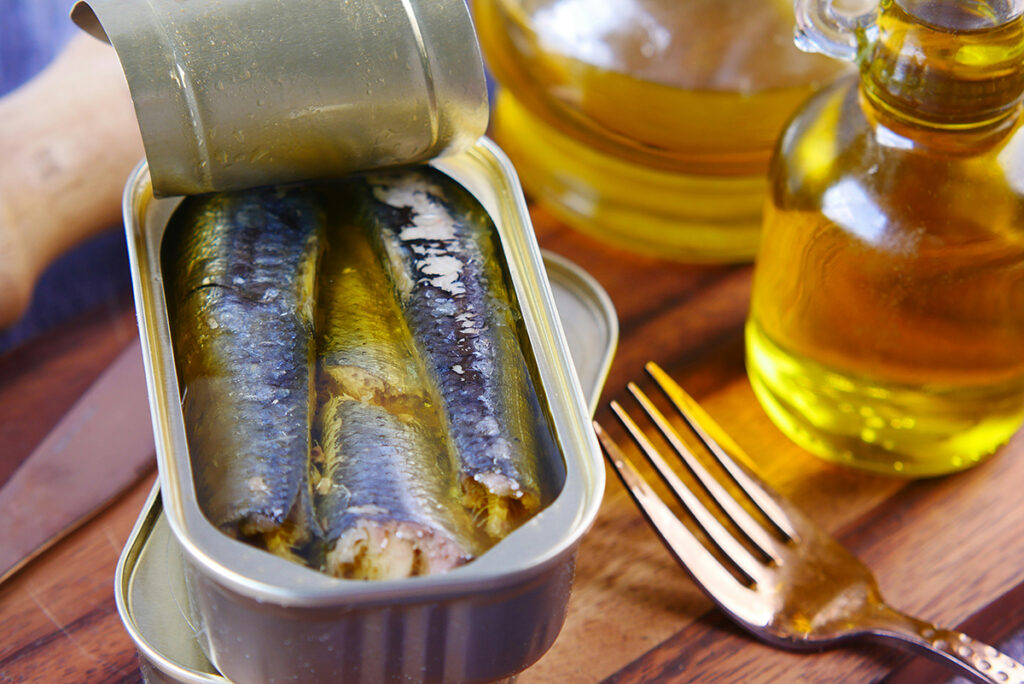Content
- Why do muscles ache after physical exertion
- Markers of muscle damage
- Training and nutrition: how to reduce muscle pain and speed up recovery
- Proteins
- Beta-alanine
- Creatine
- Polyphenols
- Output
- Reference
The basic principle of training is the progression of the load, that is, an increase in the complexity of physical exercises. Training programs based on this principle often cause muscle pain. Pain after exercise is associated with damage to myofibrils – contractile elements of skeletal muscles. Damage to myofibrils is a normal reaction to exercise. This reaction promotes adaptation to physical activity.
Exercise-induced muscle damage (EIMD) and the subsequent inflammatory response are part of the muscle repair process. The inflammatory response is primarily aimed at regenerating and healing damaged muscle fibers.
Why Do Muscles Ache after Physical Exertion
Muscle damage occurs both after endurance training and after training with weights. EIMD can be divided into two phases:
- The first phase is mechanical muscle damage and metabolic stress during training. Elongation of the muscles under tension and eccentric contraction is the main factor leading to mechanical damage to the muscles. Concentric muscle contraction, shortening of muscles under load, is responsible for metabolic stress. The mechanism of metabolic stress is that oxygen deficiency occurs in the muscles with high-intensity loads. Under these conditions, the recovery of ATP, the energy source of cells, occurs by forming a metabolite – a lactic acid. Lactic acid accumulates in the muscles and increases their mechanical damage.
- The second phase of EIMD occurs after exercise and involves an inflammatory reaction. The muscles temporarily weaken during the second phase, and muscle pain appears. The second phase, or the recovery phase, promotes adaptation to physical activity, including changing the architecture and improving the performance of skeletal muscles.
During the recovery phase, pain receptors are activated. The recovery phase is triggered when the number of reactive oxygen species (ROS) and inflammatory molecules increases in response to muscle damage. An increase in ROS raises cellular and vascular permeability, which increases the level of enzymes that break down proteins and pro-inflammatory immune cells that accumulate in the intercellular space of damaged muscles and surrounding tissues. After exercise, this biochemical reaction is accompanied by intramuscular edema and is responsible for activating pain receptors (nociceptors) and subsequent muscle pain.
Markers of Muscle Damage
When muscle damage occurs, immune cells, pro-inflammatory cytokines, and acute-phase proteins accumulate at the injury site. It leads to muscle swelling and an increase in muscle temperature. Muscle damage caused by exercise also leads to increased permeability of muscle membranes, causing leakage of muscle proteins such as creatine kinase (CK) and myoglobin (Mb) into the bloodstream. Blood markers associated with inflammation help assess muscle damage and repair.
The inflammatory response after exercise is regular and has two phases:
- Initially, when tissues are damaged due to physical exertion, pro-inflammatory cytokines are activated: IL-6, IL-8, and TNF-α. TNF-α participates in muscle regeneration, and IL-6 affects energy metabolism.
- After that, the inflammatory response leads to an increase in anti-inflammatory cytokines.
The best-known and important markers of muscle damage are CK and Mb. The concentration of Mb in the blood serum increases immediately after training and CK in 24-48 hours. The reason is that the CK molecule is larger than the Mb molecule, so it takes longer to exit the cell and enter the bloodstream. Changes in CK and Mb levels similarly reflect the degree of muscle damage and correlate with each other.
Training and Nutrition: How to Reduce Muscle Pain and Speed Up Recovery
The degree of damage, the level of muscle pain, and the speed of recovery are influenced by many factors, including gender, age, level of physical fitness, genetics, familiarity with the training task, and nutrition.
Israeli scientists have reviewed popular dietary supplements to reduce pain and accelerate muscle recovery after physical exertion.
Dietary supplements can allow an athlete to accumulate certain nutrients in skeletal muscles or other body tissues, speeding up recovery after exercise.
Proteins
Protein intake accelerates muscle adaptation to physical activity and improves muscle recovery after exercise. Taking protein after a workout with weights reduces muscle damage and decreased muscle strength and accelerates recovery. Taking protein before and immediately after weight training prevents a reduction in myogenin, a protein involved in developing and repairing skeletal muscles.
Protein can be obtained from various sources of both animal and vegetable origin. Protein can also be taken as a supplement. Which protein provides the maximum benefit for improving recovery after exercise depends on its amino acid composition and how much protein is absorbed.
The two most common proteins used in sports supplements are casein and whey protein. These proteins have different digestive properties and amino acid compositions.
Casein is the main protein in milk. When casein enters the stomach, it forms a gel or clot that slows absorption. As a result, casein provides a steady but slow release of amino acids into the bloodstream, which lasts for several hours.
Whey protein is a translucent liquid of milk and contains more essential amino acids. Whey protein is absorbed faster than casein, so taking whey protein immediately after exercise can speed up muscle protein synthesis.
In a study by Canadian scientists, older people were given 20 grams of whey protein or casein before and after exercise with weights. Compared to casein, whey protein significantly increased muscle protein synthesis more than casein. Therefore, taking whey protein immediately after training will most effectively improve adaptation and muscle recovery.
In addition, whey protein enhances glycogen synthesis in the liver and skeletal muscles to a greater extent than casein. Glycogen is a source of energy for muscles. Therefore, taking whey protein after a workout can improve muscle recovery and accelerate the replenishment of glycogen reserves, improving endurance.
β-alanine
Beta-alanine is an interchangeable amino acid that can be synthesized in the body. Additional intake of beta-alanine improves glucose synthesis in the liver and increases athletes’ endurance. When taken orally, beta-alanine stimulates carnosine synthesis in skeletal muscles. Carnosine supports muscle acidity and acts as an antioxidant, increasing anaerobic endurance.
As an antioxidant, carnosine absorbs reactive oxygen species. In addition, carnosine prevents excessive accumulation of copper and zinc ions, leading to lipid peroxidation and subsequent cell damage. Therefore, increasing carnosine levels can improve recovery after exercise.
Few studies confirm the reduction of oxidative stress when taking beta-alanine supplements. American studies in 2012 and 2014 on moderately trained men and women of college age showed that a 28-day intake of beta-alanine at 4.8 g / day did not affect oxidative stress markers after a 40-minute run. However, a 40-minute jog may not be enough to stimulate oxidative stress.
Animal studies have shown that beta-alanine can play the role of an antioxidant in the brain. Mice treated with beta-alanine for 5 weeks had significantly increased carnosine levels in the cerebral cortex and hypothalamus. An increase in carnosine in the brain was associated with an increase in brain neurotrophic factor (BDNF) and a decrease in the concentration of 5-hydroxyindoleacetic acid, a serotonin metabolite. These changes also contributed to a reduction in anxiety.
Taking beta-alanine increases carnosine levels in the hippocampus and increases resistance to post-traumatic stress disorder and stress caused by mild traumatic brain injury. An increase in carnosine in the hippocampus supported the expression of BDNF and reduced the level of anxiety. In addition, taking β-alanine reduced the marker of brain inflammation in traumatic brain injury.
These results confirm the role of carnosine as an antioxidant and indicate the possibility of using β-alanine to increase resistance and recovery after concussion in competitive contact sports.
Creatine
Creatine is a nitrogen-containing organic compound synthesized from the amino acids glycine, arginine, and methionine mainly in the liver and in smaller quantities – in the kidneys and pancreas. In addition, creatine is found in high concentrations in meat and fish – approximately 525 mg of creatine is contained in 100 g of raw red meat.
Creatine supplements increase strength and performance during high-intensity anaerobic workouts. In addition, creatine accelerates the replenishment of glycogen reserves and improves recovery after training.
It has been suggested that creatine-induced increase in cell volume may be the mechanism responsible for enhancing glycogen synthesis. A 2004 study showed that taking creatine for 5 days at 20 g/day increased muscle creatine by 31% and increased muscle glycogen stores by 18%. Later studies confirmed these findings and showed that a more significant accumulation of muscle glycogen (81%) occurred within 24 hours after high-intensity training and was not associated with changes in creatinine levels in muscles.
A study on untrained people showed that taking a creatine supplement for 5 days at 20 g / day does not reduce muscle damage and muscle pain after exercise with weights.
However, studies on experienced athletes who train with weights have shown that creatine supplements significantly reduced uric acid levels (a marker of physical activity) and maintained performance after training with excessive loads.
Another study on previously untrained men showed that creatine supplementation increased muscle strength during the recovery period after exercise. In addition, during the week after training, the markers of muscle damage were 84% lower than in the control group. In marathon runners, creatine supplements also reduce muscle damage and markers of inflammation after a 30-kilometer run.
Polyphenols
Polyphenols are antioxidants found in many plant foods, fruits, tea, and coffee. Four primary polyphenols differ in their structure: phenolic acids, flavonoids, stilbenes, and lignans.
Flavonoids are the most common polyphenolic supplement to maintain the oxidative balance in the body. In addition, short-term intake of polyphenol supplements can reduce the decrease in strength after training.
American scientists have shown that a 2-week intake of polyphenols reduced the level of muscle pain after 100 eccentric contractions of the extensors of the legs.
Other studies have shown that polyphenol supplementation weakened the inflammatory response and reduced cell death markers during recovery after exercise with weights. In addition, a 4-week intake of polyphenols increased the antioxidant capacity in people exercising with weights. Therefore, polyphenol supplements can improve recovery after physical exertion.
Taking polyphenols has a more potent effect on the recovery response during high-intensity exercises than super-endurance activities. Thus, 1000 mg/day of quercetin for 3 weeks had no significant impact on inflammatory and oxidative stress after running 160 km for 3 days for 2.5 hours a day at 65% of the maximum oxygen consumption. On the contrary, a 9-day intake of 1760 mg of black tea extract improved recovery and reduced oxidative stress and muscle pain during an intensive interval program on a bicycle ergometer.
Output
Recovery after training is influenced by many factors, among them: age, gender, training experience, type of muscle fibers and type of physical exercises – endurance or with weights. Dietary supplements can reduce the level of muscle pain and accelerate muscle recovery after exercise. Protein, beta-alanine, creatine, and polyphenols effectively accelerate recovery after endurance training and strength exercises.
Useful article, necessary information? Share it!
Someone will also find it useful and necessary:
Reference
Exercise-induced muscle damage: mechanism, assessment and nutritional factors to accelerate recovery



